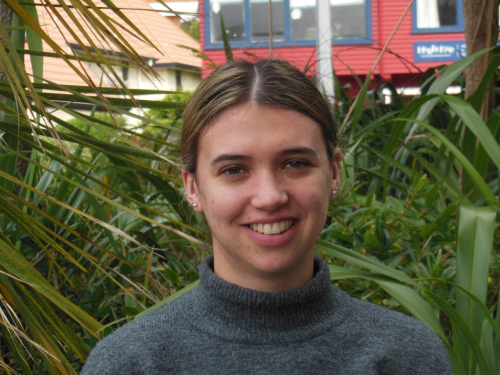
NIWA Intern Blog: Deep sea communities on the seafloor

Kia ora koutou katoa. Ko Tessa Thomson tōku ingoa. Nō Ngāti Tukorehe ahau.
I am currently attending Te Herenga Waka, Victoria University of Wellington and studying towards a Bachelor of Science majoring in Marine Biology and Māori Resource Management.
I was thrilled to see the opportunity for a Māori student to intern at NIWA over the summer period, and I feel very lucky to have been successful in gaining the position.
I have only been at NIWA for three weeks, however I feel as though the skills, knowledge, and experience I am gaining while being here is invaluable and a great way of seeing what I am learning at University being applied elsewhere, rather than just in the classroom.
The project I am working on has a large, multidimensional focus, and the work that I will be undertaking is a small, but not insignificant proportion of this work.
My main job is to analyse images taken on the NIWA research vessel Tangaroa. These images were collected in areas where gas is bubbling out of the seafloor, providing a food source for communities of organisms.
I am looking at the deep-sea communities that reside on the seafloor, and reviewing what impact submarine landslides, and the surrounding slopes have on these organisms and communities.
I have spent the past three weeks developing an image library from the data and learning about and identifying animals and their bioturbation patterns.
The data and conclusions that I draw from these images will be used to assess the potential environmental impacts of seafloor instability that could be caused by drilling for gas hydrates
Gas hydrates have been considered as a potential alternative energy resource in several locations worldwide as they contain large quantities of natural gas. Therefore, we need to make sure we understand all of the possible impacts of such activity.
The other aspect of my internship is to actively and consistently be aware of the implications that this project has for Māori. At the moment my aim is to develop not only a written analysis on my work, however also to develop engaging and informative publications for tangata whenua of the areas of this specific expedition.
As a rangatahi Māori I see the importance of looking after our whenua and moana, and I am extremely passionate about this.
I am extremely excited to see how this work and analysis progresses over the next 10 weeks. It is vital to have Māori perspectives in these environments, and I look forward to reporting on the progress being made. Ngā mihi nui ki a koutou katoa.
Disclaimers and Copyright
While every endeavour has been taken by the East Coast Lab Hikurangi Subduction Zone M9 to ensure that the information on this website is
accurate and up to date, East Coast Lab Hikurangi Subduction Zone M9 shall not be liable for any loss suffered through the use, directly or indirectly, of information on this website. Information contained has been assembled in good faith.
Some of the information available in this site is from the New Zealand Public domain and supplied by relevant
government agencies. East Coast Lab Hikurangi Subduction Zone M9 cannot accept any liability for its accuracy or content.
Portions of the information and material on this site, including data, pages, documents, online
graphics and images are protected by copyright, unless specifically notified to the contrary. Externally sourced
information or material is copyright to the respective provider.
© East Coast Lab Hikurangi Subduction Zone M9 - www.eastcoastlab.org.nz / +64 6 835 9200 / info@eastcoastlab.org.nz
